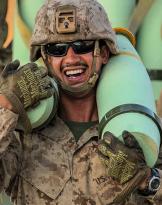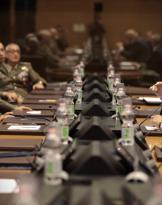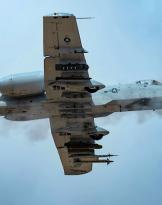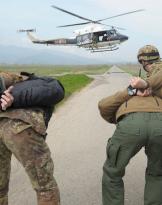The current international scenario is characterized more and more incisively by the use of those who, in journalistic jargon, are defined drones, both in military operations and in "international police", (in primis) on the part of the United States that, since the 2001, have carved out part of their strategy of contrast in the fight against fundamentalist terrorist groups on them: in May of this year, however, dates back to the last targeted killing from them (United States) accomplished, to the detriment of the Taliban leader Akhttar Mansour, shot to death while in a vehicle in a remote area of Pakistan on the border with Afghanistan.
It may be of interest, then, to analyze the Italian legislation of reference, in the military sphere, not before, however, to have carried out a terminological clarification: the word "drone" originates from the hum of the first models similar to the noise produced by the male of the bee, the kelp (in English drone, in fact), and indicates a special category of flying objects that, in a more technical way, are called Remote Piloting Aircraft (APR), that is devices of various sizes able to fly without the need for a pilot on board, which remains on the ground - or on an adjacent vehicle - equipped with a radio remote control to direct its movements.
Although there had already been the first prototypes of unmanned aircraft1 and that soon the international law would be interested in the subject2, the rules contained in the Italian Navigation Code of the 1942 had not foreseen anything in this regard; it was only in 2004, the Law n. 178 bearing "Arrangements regarding the remote piloted aircraft of the Armed Forces”Introduced for the first time the definition of remotely piloted aircraft (APR), dictating a discipline aimed at allowing air navigation and administrative management of this new type of military aircraft3.
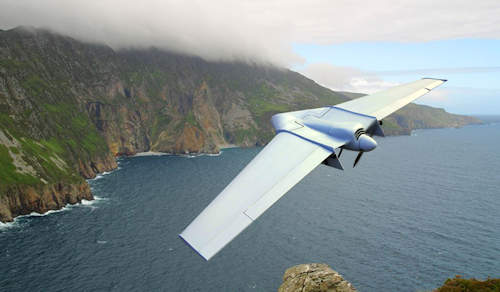 Article. 2 of the aforementioned law, in particular, authorized the Italian Armed Forces to use the aforementioned (APR) for operational and training activities aimed at defense and national security, pending a regulation governing the airworthiness and use of such means airplanes in the general air traffic system (GAT), also establishing that their use should take place within segregated areas subject to restrictions and with the limitations established by a specific technical-operational document jointly adopted by the Italian Air Force, ENAC and ENAV for air traffic issues4.
Article. 2 of the aforementioned law, in particular, authorized the Italian Armed Forces to use the aforementioned (APR) for operational and training activities aimed at defense and national security, pending a regulation governing the airworthiness and use of such means airplanes in the general air traffic system (GAT), also establishing that their use should take place within segregated areas subject to restrictions and with the limitations established by a specific technical-operational document jointly adopted by the Italian Air Force, ENAC and ENAV for air traffic issues4.
With the reform of the Navigation Code, introduced by Legislative Decree 15 March 2006, n. 1515 they are, finally, inserted in the art. 743, and equated to the aircraft, and disciplined by the special laws, by the ENAC regulations and - only the military ones - by the decrees of the Ministry of Defense6.
In particular, the art. 745 cod. nav. establishes in the second paragraph that military aircraft (including today also APRs) are admitted to navigation, certified and registered in the military aircraft register (RAM), held by the Directorate of Aeronautical Armaments and for the Airworthiness of the Ministry of Defense .
Still in the 2006, precisely in implementation of the provisions of art. 743, paragraph 2, of c. nav., the Minister of Defense issues the DM 23 June 2006, relating to the requirements and classification of military APR, distinguishing them in7:
|
CLASSES |
IDENTIFICATION CODE |
|
STRATEGIC |
S: aerial vehicle weighing more than Kg 500; |
|
TACTICAL |
T: aerial vehicle with weight from Kg 150 to Kg 500; |
|
LIGHT |
L: aerial vehicle with weight from Kg 20 to Kg 150; |
|
MINI |
M: aerial vehicle with weight from Kg 2 to Kg 20; |
|
MICRO |
m: aerial vehicle weighing less than Kg 2. |
Subsequently, the law n. 178 / 2004 is repealed with the entry into force of Legislative Decree 15 March 2010, n. 66 (Code of military order), which governs the use of military APRs in the articles 246 and following, which, for the most part, refer to the previous legislative decree.
Of particular importance, in the new legislative framework, the art. 247, paragraph 1, which authorizes the Italian Armed Forces to use the APR for operational and training activities aimed at defense and national security; while in the 2 and 3 paragraphs it is expected that their use will take place within determined air spaces and with the limitations established in a technical operational document drawn up by the air force (or by the armed force that uses it) after consultation with ENAC and ENAV .
Next to the aforementioned provisions, there are also caveat and rules of engagement, in addition to international standards ((in primis), those on the armed conflicts - Loac: Laws of armed conflict -, to which are added, for the expeditionary bodies, those of the country in which these forces are or will be found): but this will be discussed on another occasion.
1 The first attempt to build and use an unmanned aircraft, which can be found in history, dates back to the 1849, when the Austrians attacked the city of Venice using balloons loaded with explosives: some of these systems were launched by the Austrian ship Vulcano . The following examples and prototypes of unmanned aircraft made their appearance during the First World War: an example is the "Aerial Target" in the 1916, which was controlled by radio control techniques. The 12 September of that year, the Hewitt-Sperry automatic airplane, or also known as the "flying bomb", made its first flight, demonstrating the concept of unmanned aircraft. The aircraft was controlled thanks to a series of internally mounted gyroscopes (source: https://it.wikipedia.org/wiki/Aeromobile_a_pilotaggio_remoto).
2 The Chicago Convention, stipulated on December 7 1944, allegedly assimilated the APR to aircraft. To the art. 8, in fact, would have foreseen that: "no unmanned aircraft capable of handling the territory of a Contracting State may fly without pilotage, except as specifically authorized by that State and subject to the conditions of the latter. Each Contracting State undertakes to ensure that the unmanned flight of such an aircraft in regions open to civil aircraft is controlled so as to avoid any danger to civil aircraft"
3 Article. 1 of the aforementioned law defined, in fact, the Remote Pilot aircraft (APR) as "an aerial vehicle piloted by a crew operating from a remote command and control station"Highlighting, therefore, one of the peculiarities of the new war instrument, namely the absence of physical interpenetration between aircraft and pilot.
4The limitations, as specified in the illustrative report of the law, concerned mission profiles, operating procedures, work areas and equipment, including the issuance of specific NOTAMs, radio and radar communications and weather conditions. The only exception was that in the event of armed conflict or crisis situations, the APR could be used without any kind of limitation.
5 This decree contains "Corrective and supplementary provisions to the legislative decree 9 May 2005, n. 96 containing the revision of the aeronautical part of the navigation code pursuant to article 2 of the 9 law November 2004, n. 265 ".
6 The Navigation Code governs the use of military aircraft in an extremely limited manner (in fact, it deals with the civil use of aircraft) and in fact, in art. 748, expressly establishes that it (the Code) does not apply to military aircraft including military APRs. This means that, among other things, the criminal offenses envisaged and punished by the Navigation Code are not applicable to the latter, unlike the civil law aspect, the same “in whole”To that provided for civil aircraft, given that art. 965 cod. nav., unlike in the past, not only no longer expects any difference between civil and state aircraft, but has expressly stated that military aircraft are also subject to special responsibility for damage caused by an aircraft to people or things on the surface.
7 As from Table A reported in the decree in question. See, for further information, what is reported at the link:
http://www.difesa.it/Giustizia_Militare/rassegna/Bimestrale/2015/Documents/06_2015/3VECCHIENUOVIPROBLEMIDIDIRITTOMILITARE.pdf, "Old and new problems of military law", General Military Procuratorate of the Republic at the Supreme Court of Cassation, year 2015.
Marco Valerio Verni is a lawyer, owner of the international law firm of the same name. He is an expert in criminal law and military criminal law, as well as a qualified councilor in international humanitarian law for the armed forces. He attended the Course on “CSDP Orientation Course” and the one on “Civilian Aspects of Crisis Management” of the European Security and Defense College of Brussels, the 16 ° Cocim Course (Civil-Military Cooperation) at the Center for Defense Studies. , the 17 ° Course for Legal Adviser in the Armed Forces and the 15 ^ Special Session (67 ^ Ordinary) of the IASD - Institute for Higher Defense Studies. He is a current member of the International Relations Department of the Bar Association of Rome, as well as a member of the International Society for Military Law and the Law of War.
(photo: Leonardo-Finmeccanica's Sky-Y opens, following the IDS Manta)



